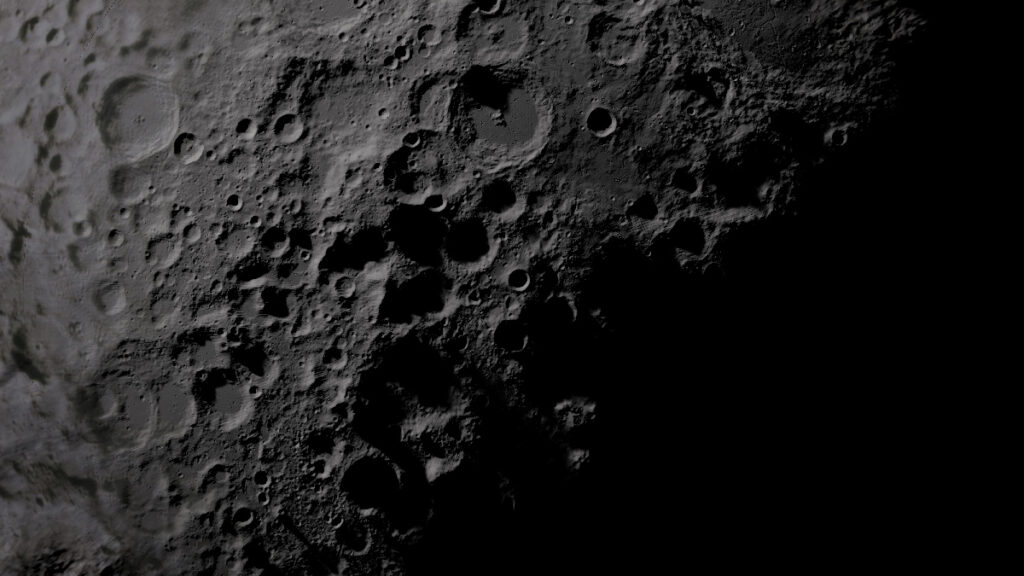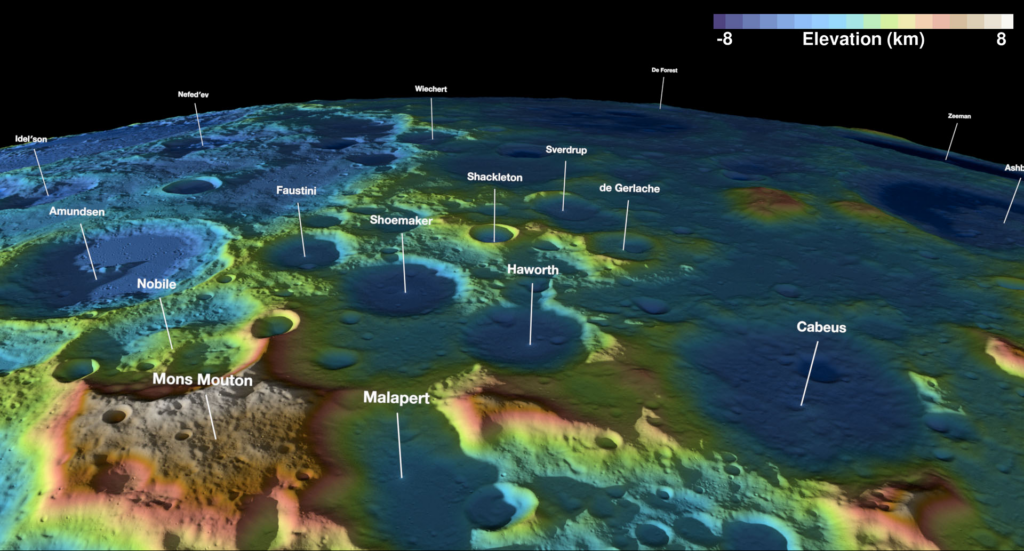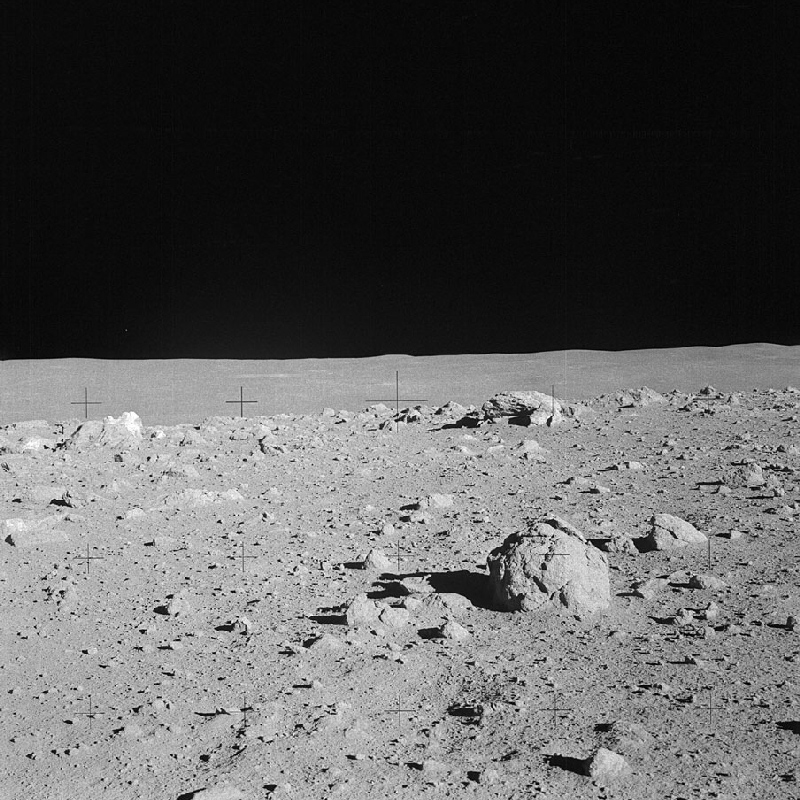It’s been more than 50 years since the last Apollo astronauts set foot on the Moon, but new sets of lunar boot prints will soon appear. A series of missions named after Artemis—twin sister of Apollo in Greek mythology—will send a handful of people back to the Moon, with the first group scheduled to land in 2026.
Artemis astronauts will visit “torturous terrain.”
Apollo astronauts explored the lunar surface in well-lit areas with relatively benign topography. Artemis astronauts, on the other hand, will visit “torturous terrain,” said planetary geologist David Kring from the Lunar and Planetary Institute. Navigating, working, and reaching the most scientifically interesting sites will be challenging.
“They’re asking more of the astronauts this time,” said planetary scientist David Smith of the Massachusetts Institute of Technology.
Nevertheless, lunar researchers are confident Artemis astronauts will make fascinating observations and are eagerly anticipating the science they will be able to dig into, both figuratively and literally. “I hope they get there soon and bring a good shovel,” said planetary scientist Margaret Landis of the Laboratory for Atmospheric and Space Physics at the University of Colorado Boulder.
A Stunning Landscape
“We’re talking about going to the Alps.”
The first Apollo landing site “had to be boring—it was the first time that they were going to land on the Moon!” said planetary geologist Carolyn van der Bogert of the University of Münster. The Sea of Tranquility, for instance, where NASA astronauts Neil Armstrong and Edwin “Buzz” Aldrin took humanity’s first steps on the Moon, is a level basalt plain in the Tranquillitatis Basin.
Later missions went to increasingly complex terrain that included valleys, craters, and low mountains, paving the way for Artemis astronauts, who will head for the rugged south pole. If Apollo’s earliest missions were to a literal Sea of Tranquility, van der Bogert said, this time “we’re talking about going to the Alps.”

Mons Mouton, a mountain whose edge is visible from Earth with the help of a telescope, is among the features that dominate the south pole landscape. About 10 kilometers below its highest peak lies the base of Shoemaker, an impact crater thought to contain anomalous amounts of hydrogen. That 10-kilometer difference in elevation between peak and crater is comparable to the distance between sea level and the top of Mount Everest. Additional craters, massifs, and plateaus extend from the pole. The dazzling terrain “would be a national park if it was here on Earth,” Kring said.
Distinct patterns of solar radiation also distinguish the lunar south pole. Rather than setting and rising, the Sun circumnavigates the horizon. That means some polar regions are nearly always illuminated, making them ideal sites for the long-term, solar-powered bases NASA would like to build. Conversely, some regions are almost always dark—so-called persistently shadowed regions, or PSRs.
PSRs are mostly located on the floors of deep craters near the poles, where the Sun never rises high enough to illuminate and warm them. As a result, PSRs are extremely cold and, for that reason, may harbor water ice. Finding a substantial source of water would be a huge benefit for long-term lunar exploration and beyond. Astronauts could drink it, and its components—oxygen and hydrogen—could be used to make breathable air and rocket fuel.
Since the 1990s, scientists have looked for ice near the Moon’s south pole using a range of instruments, from the Arecibo radio telescope to uncrewed spacecraft, but data have been difficult to interpret. A similar area on Mercury has abundant water, but it seems that ice makes up only around 1% of the volume of surface sediments in the Moon’s coldest regions.
“So that’s the big mystery—why is there seemingly so much less ice on the Moon?” said planetary scientist Matthew Siegler of the Planetary Science Institute. The Moon’s ice could be concentrated in places past missions have overlooked, or it could be buried below the surface, where remote instruments can’t see it. NASA is hoping human explorers can resolve the question.

Mapping the Terrain
The astronauts who will touch down on the Moon in 2026 will be part of the third mission (Artemis III) in a five-part series. NASA completed Artemis I—an uncrewed mission—in 2022, and Artemis II will carry four astronauts around the Moon without landing in late 2025. The Artemis III crew will be limited to exploring on foot, but later missions may bring rovers.
Since it was launched in 2009, the Lunar Reconnaissance Orbiter (LRO) has circled the Moon, sending back data that inform astronauts about the terrain they can expect to encounter. An altimeter measures attributes such as the slope, roughness, and reflectance of the lunar surface. Pictures from an onboard camera create explorable, detailed maps.
For some parts of the Moon, the resolution of these maps can be “10 centimeters, maybe a little better,” said Smith, who leads the team focused on LRO’s altimeter. He estimated that compared with the Apollo days, “the accuracy of knowing where you are is now maybe 100 times better.”
On the basis of their knowledge of the Moon’s topography, NASA is considering 13 regions where Artemis missions could land. In addition to being near scientifically interesting places, the landing site will likely need to be flat (to accommodate the lander) and well illuminated (to guarantee a visible flight path) and able to accommodate a relatively flat path the astronauts can travel to get to and from the lander.
“When you add all the different layers together, [the list of possible landing sites] really starts to narrow down fast,” said planetary scientist Brett Denevi from the Johns Hopkins University Applied Physics Laboratory, who will lead the Artemis III geology team back on Earth.
Lighting the Way
At least during Artemis III, astronauts will avoid navigating the Moon’s roughest terrain by staying within a couple of kilometers of the lander and avoiding slopes of more than 20°. Even with these constraints, the team won’t be able to avoid issues of visibility.
“Imagine you’re at the Grand Canyon and it’s dusk. It’s actually hard to see what’s in the shadows.”
Because the Sun hits the lunar south pole at a very low angle and there’s very little atmosphere to scatter light, the astronauts will face extremely long, sharp shadows interspersed with sunlit regions. Combined with the Moon’s low color contrast, it’s going to be difficult for the astronauts to see where they’re going. Imagine you’re “at the Grand Canyon, and it’s dusk,” van der Bogert said. “It’s actually hard to see what’s in the shadows.”
Geologist José Hurtado of the University of Texas at El Paso, who helps train the astronauts, experienced a facsimile of these conditions in a virtual reality environment at Johnson Space Center in Houston. “It becomes hard to see little bumps and ridges—and even craters—until you’re right up against them,” he said. Without familiar objects, such as trees and buildings, the astronauts may also find themselves lacking a sense for the scale of their surroundings.
To simulate these conditions, the Artemis crew has been training in the Arizona desert at night, using floodlights to simulate the low angle of the Sun. The lighting conditions “really focused their attention in a more narrow area, almost like having blinders on,” said research geologist Lauren Edgar from the U.S. Geological Survey’s Astrogeology Science Center, who is also training the astronauts. Astronauts could use portable lights to analyze rocks accurately. But “what you lose is that connectivity to the broader region,” she said.

Artemis astronauts won’t have an electronic navigation tool to guide them because the Moon lacks GPS or another global navigation satellite system. Instead, astronauts will have to navigate by recognizing landmarks and following maps. “I think it might be challenging,” Hurtado said, even though practicing in a virtual reality environment should help. (During Apollo 14, Hurtado added, similar issues were part of what prevented astronauts from finding a site called Cone crater, despite unknowingly walking to within 40 meters of the crater’s rim.)
Shades and visors on the astronauts’ helmets will help them see in the harsh light, said extravehicular activity program manager Russell Ralston from Axiom Space, the company designing the suits. Cameras that operate in low lighting might also help them see into shadows, and keeping the Sun perpendicular to the astronauts’ path could minimize glare and maximize visibility, Hurtado added.
Frigid Shadows
With very little atmosphere to store heat, the Moon’s surface temperature varies wildly depending on whether an area is illuminated or not. PSRs can be as cold as 25 K (−248°C, −416°F) or maybe even lower. “At that point, we’re measuring temperatures that are colder than the surface of Pluto,” said planetary scientist Jean-Pierre Williams of the University of California, Los Angeles, a member of the team that works with a temperature-measuring instrument called Diviner that’s mounted on the Lunar Reconnaissance Orbiter. At the other extreme, polar regions tilted toward the Sun can reach temperatures above 300 K (27°C, 80°F).
These temperatures are not air temperature, as measured on Earth, but rather radiated temperature, as you would experience standing next to a fire. When the major source of heat (sunlight) is removed, the temperature rapidly drops because there’s very little air to trap the heat. That means if an astronaut holds their hand up to the Sun, the illuminated side could be hundreds of degrees warmer than the dark side.
Because rapid temperature swings are hard on human health as well as on electronic instruments—and because it’s hard to see in the shadows—astronauts will likely try to stay in illuminated regions as much as possible, said planetary geoscientist James Head of Brown University. Shadows move rapidly depending on the time of day and the time of year, however. Launches are also frequently delayed, meaning mission planners may find themselves mapping out new sunlit routes at the last minute.
Entering a persistently shadowed region is similar to “sticking your astronauts into a vat of liquid nitrogen.”
Regardless, Artemis teams are planning to keep astronauts in the dark occasionally. Siegler described entering PSRs as similar to “sticking your astronauts into a vat of liquid nitrogen,” for instance, but the astronauts’ suits will allow them to function at those temperatures for at least 2 hours, according to Ralston.
Two hours will not be long enough for astronauts to fully explore large PSRs, but even topographic rough spots only centimeters across can harbor tiny persistent shadows. Water in these small PSRs could indicate that a source on the Moon actively replenishes the substance. Such a discovery “would definitely be on the cover of Nature and Science, and there would be a lot of discussion about it,” Landis said.
It’s not yet clear how astronauts will maximize their ability to work within large PSRs, Edgar said. Scientists have floated some very low tech possibilities. For example, Siegler said a very simple way to avoid having to spend time in a PSR would be to stand on the edge and sample within it using a rake with a long handle.
A robotic mission called VIPER (Volatiles Investigating Polar Exploration Rover), which aims to search for water starting in late 2024, could also provide key reconnaissance, Head said. By scouring the region for evidence of water before the Artemis crew arrives, VIPER will hopefully guide their efforts.
Rough Ground
In addition to its topography, the south pole’s sediments may also make navigation difficult for the Artemis crew. Because the ground has been pummeled by micrometeorites more extensively than the equatorial region where the early Apollo astronauts landed, south pole sediment may be deeper and finer grained. Some of the later Apollo missions landed in highland regions with similarly soft sediment, and it made moving around a slow process.
“I don’t think we know yet how the trafficability is going to affect how the astronauts are going to be able to walk and drive,” Head said.
By observing tracks from boulders that have rolled down the edges of craters, some researchers have estimated the depth of the layer of loose sediment that covers the south polar region. In flat, sunlit areas, moving around shouldn’t be a problem, their research suggests—astronauts and rovers are likely to sink only a few centimeters. Sediment on and below steep slopes, however, may not be held firmly in place, so slipping could be a problem.
In areas that alternate between extreme hot and cold, sediment gets compacted as it expands and contracts. PSRs, on the other hand, are always very cold, so some scientists wonder whether the ground will be covered in a thick layer of fluffy sediment, like powdery snow.
“Should your astronauts wear snowshoes?” Siegler said he wonders.
Additional boulder track studies have shown that at least in some south pole PSRs, the lunar regolith is at least as compact as that of the highlands or other sunlit areas. VIPER could shed more light on this question.
The Scientific Process
Despite the challenges, Siegler said if NASA were to send astronauts to the Moon’s south pole tomorrow, “they would be safe” because engineers know how to land on, take off from, and survive on the lunar surface. Yet many questions remain about exactly where the astronauts will go, how thoroughly they’ll be able to explore, and how the lighting and the quality of the surface will affect their mobility.
At their heart, the Artemis missions are extreme field geology. Just as on Earth, questions and hypotheses will evolve as scientists explore, Hurtado said, and learning something unexpected early in the expedition can alter the course of the research. The astronauts will need to constantly evaluate, refocus, and learn along the way.
Even if the Artemis missions do not reveal water—even if none of the science goes the way scientists think it will—important findings are almost certain to come out of the program, van der Bogert said, because “now you’ve got to figure out, okay, what went wrong? It’s the scientific process.”
Author Information
Saima May Sidik (@saimamaysidik), Science Writer



